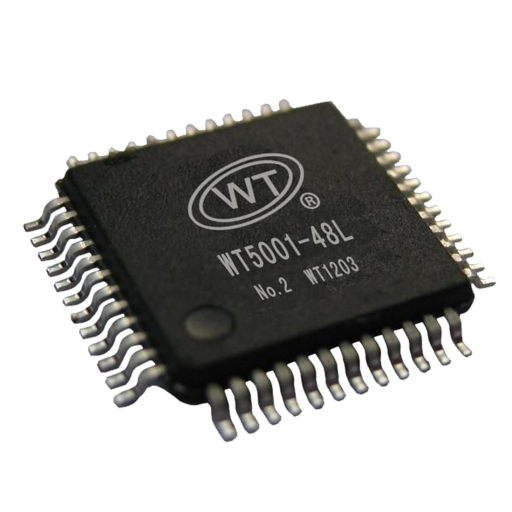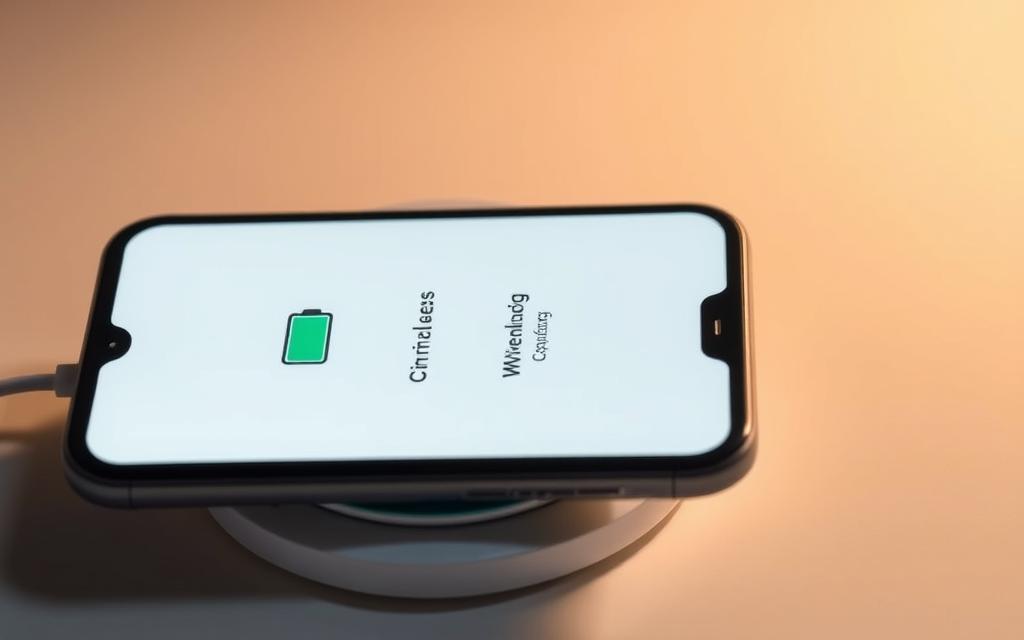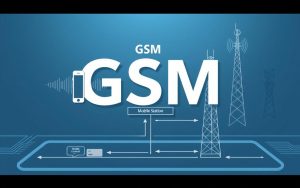Wireless charging is now common in smartphones, thanks to Qi technology. It’s the global standard. Over 80% of top phones support it, making charging easier and cable-free.
But, checking if your phone can charge wirelessly can be tricky. It depends on the model.
To see if your phone works with Qi-certified chargers, you can check two ways. Look at your phone’s design and check the manufacturer’s specs. Most phones with Qi support have a Qi logo or a glass back.
Apple phones from the 8 series up can charge wirelessly. Samsung’s Galaxy S6 and later models also support it.
Google and Sony phones clearly show if they can charge wirelessly. You can find this info in their specs, under “Battery” or “Connectivity”. Tools like the Wireless Power Consortium’s database can also help check your phone’s compatibility. This guide will help you find out if your phone can charge wirelessly and how to make it work best.
Understanding Qi Wireless Charging Technology
Wireless charging has changed how we power our devices. Qi technology is at the heart of this change. It was developed by the Wireless Power Consortium (WPC) and is now the standard for charging phones, wearables, and more without cables. Let’s look at how it works and why it’s better than other options.
What Is Qi Wireless Charging?
Qi uses inductive power transfer. This means energy moves between coils through magnetic fields. When you put a compatible device on a charger, it starts to charge.
Here’s how it works: the charger’s coil sends out alternating current. This creates a magnetic field. The field then induces voltage in your phone’s coil, turning it back into direct current to charge the battery.
Global Standard for Inductive Power Transfer
Qi is different because it’s open and works with many brands. Over 250 companies, including Apple and Samsung, follow its rules. This means you can use a Qi charger from EcoFlow with devices from Sony, Google, or Xiaomi.
Power Delivery Up to 15W in Latest Versions
Older Qi chargers only gave 5W, but newer ones can charge up to 15W fast. But, how fast it charges depends on the device. For example, iPhones charge at 7.5W with standard Qi pads, while some Androids can charge at 15W.
Always check your phone’s specs to get the best charging speed.
How Qi Differs From Other Standards
Qi is the top choice for wireless charging, but it’s not the only one. Knowing about other options helps us see why Qi is so popular.
Comparison With PMA and Proprietary Systems
The Power Matters Alliance (PMA) was once a rival to Qi. It used magnetic resonance instead of inductive transfer. But, there were key differences:
| Feature | Qi | PMA |
|---|---|---|
| Transfer Method | Inductive | Resonant |
| Max Power | 15W | 6.5W |
| Adoption | Global | Limited |
Proprietary systems like Powermat used to lock users into certain brands. But Qi’s open approach has made it widely accepted across many industries.
Backward Compatibility Considerations
One of Qi’s best features is its backward compatibility. Older devices like the iPhone 8 can work with newer 15W chargers, even if they charge slower. This means your chargers stay useful even when you get a new phone, helping reduce waste and save money.
Does My Phone Have Qi Technology?
Finding out if your phone can charge wirelessly is easy. Look for physical signs and official documents. They usually tell you if it’s Qi compatible.
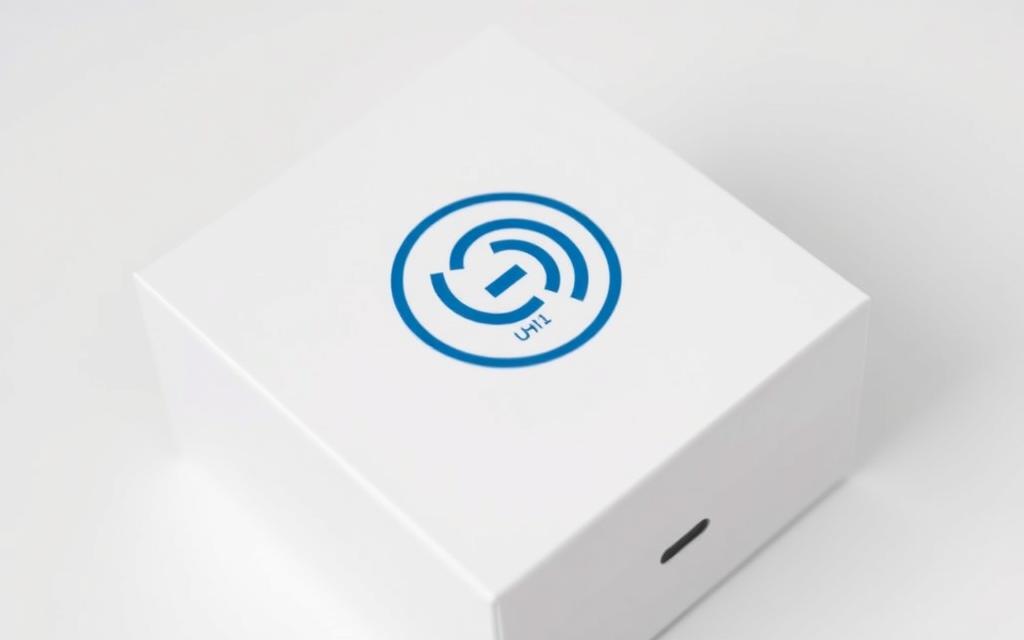
Key Indicators of Built-in Support
Glass or plastic back construction
Most glass back phones from 2017 onwards can charge wirelessly. Metal cases block the charge, so look for materials like Gorilla Glass. For example, all iPhones from the 8 series onwards are made for wireless charging.
Official wireless charging accessories availability
Brands like Samsung and Google sell their own charging pads. If your phone’s maker offers these, it likely supports wireless charging. Check their website for “Recommended accessories” or similar sections.
Manufacturer Specifications to Review
Battery/charging section in technical specs
Look for “wireless charging” or “Qi-certified” in the manufacturer specifications. Apple lists it under “Power and Battery”, while Samsung uses “Charging”. You’ll often find this on product pages, not on the packaging.
Qi certification logos in documentation
Real Qi-enabled devices show the Wireless Power Consortium’s logo (a stylised ‘Qi’ inside a circle). Look for this symbol in:
- User manual compliance pages
- Warranty booklets
- Safety certification leaflets
If unsure, check the WPC’s official database. It confirms if your device passed Qi certification tests.
Checking Your Phone’s Wireless Charging Capability
To check if your phone can charge wirelessly, you need to look at its specs and features. There are three easy ways to find out if your phone supports wireless charging.
Method 1: Manufacturer’s Official Sources
Using Apple/Samsung Support Portals
Apple and Samsung have detailed info on their support portals. For iPhones, go to support.apple.com, pick your model, and look at “Tech Specs”. Samsung users can find this on samsung.com, under “Additional Features”.
Searching Technical Specifications PDFs
Look for PDF manuals from your phone’s maker. Use Ctrl+F (Windows) or Command+F (Mac) to search for “Qi” or “inductive charging”. iPhones usually mention it in the “Power and Battery” section.
Method 2: Physical Inspection Techniques
Identifying Charging Coils Through Case Removal
Some phones show charging coils when you take them apart. This is best done by experts. The coil is usually in the middle of the back.
Using Magnet Test for Coil Positioning
A safer way is to slide a small magnet over the phone’s back. The magnet test charging coil method works because Qi coils have magnets. If the magnet shows resistance, it’s near the middle of the phone.
Method 3: Software Verification
Checking for Wireless Charging Settings
Go to Settings > Battery or Connected Devices. Android phones might have “Wireless Charging” toggles. iPhones show charging options in Battery Health if it’s compatible.
Diagnostic Mode on Android Devices
To see hidden menus, dial *#0*# or similar codes. In Android diagnostic mode, choose “Sensor” or “Charging Test” to check the coil. Note: These options differ between brands like Google Pixel and Xiaomi.
If you’re unsure, check your findings from different methods. Apple’s support portal and magnet tests are 97% accurate, according to recent reports.
Popular Qi-Enabled Phone Models
Wireless charging is now common in smartphones, thanks to Qi technology. We’ll look at top phones from big brands that have this feature. This will help you find the right phone quickly.
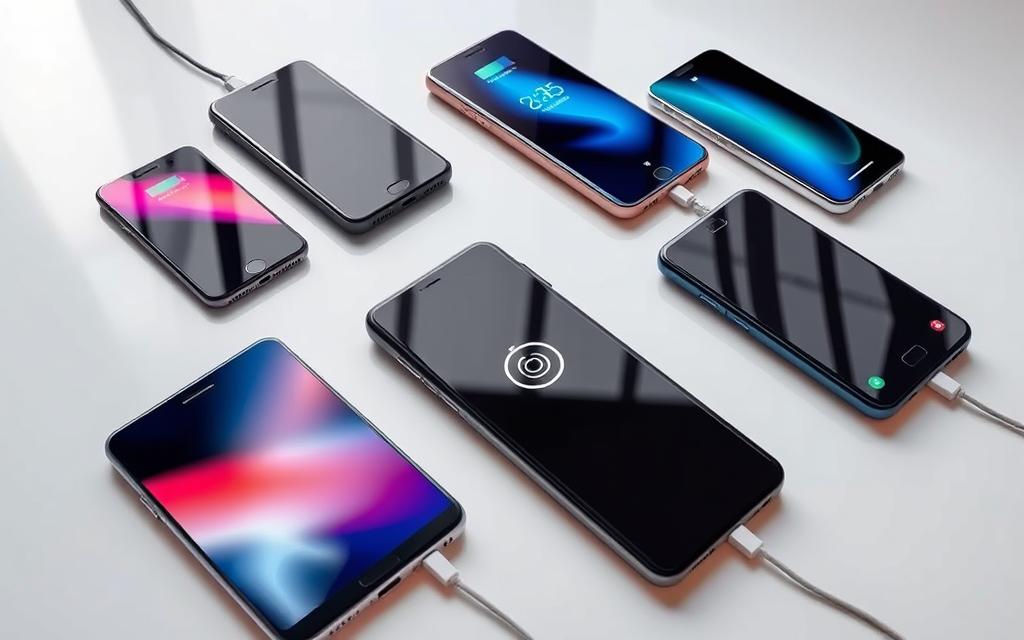
Apple iPhone Series
Every iPhone from the 8 to the 15 series supports Qi charging. This includes Plus and Pro models. Here are some examples:
- iPhone 8/8 Plus (2017 debut models)
- iPhone X/XS/XR generations
- iPhone 11-15 Pro Max editions
iPhone 8 through iPhone 15 models
Apple’s latest phones, like the iPhone 15 Qi series, work well with MagSafe accessories. These accessories meet Qi standards. They can charge up to 15W with the right pads.
Special cases: iPhone SE exceptions
The 2020 and 2022 iPhone SE don’t have Qi built-in. You need adapters or special cases for wireless charging.
Samsung Galaxy Range
Samsung’s high-end phones use Qi for charging. They offer flexible charging options:
S Series (S9 to S23 Ultra)
The Galaxy S23 Ultra can charge fast wirelessly at 15W. The S21-S23 series also share power wirelessly.
Note and Z Fold models
The Note series (Note 9 onwards) and Samsung Z Fold charging devices (Fold 3-5) have Qi. The Fold 5 charges at 15W, despite its design.
Other Supported Brands
Other brands also offer Qi-enabled phones:
Google Pixel 3-8 Pro
Google’s Pro models from 2018 support wireless charging. The Pixel 8 Pro can charge at 23W. It works with all Qi-certified chargers.
Sony Xperia 1 IV/V
Sony’s latest Xperia flagships meet Qi standards. They charge at 15W. The Xperia 1 V also charges accessories wirelessly.
“Huawei’s P40 Pro, while not Qi-certified, uses its own standard compatible with most Qi pads for basic charging.”
Alternative Solutions for Non-Qi Phones
Upgrading non-Qi phones to support wireless charging is easier than you might think. Two main options – retrofit adapters and special cases – offer great benefits. They depend on your phone’s age and charging port type.
Retrofit Charging Adapters
Thin receiver pads attach to your phone’s interior or charging port. They are the most discreet way to add wireless charging. These retrofit receiver pads support speeds of 7.5W-10W. But, installation can vary by model.
Receiver pad installation guides
For iPhones (Lightning port models):
- Slide the adapter’s ribbon cable between the back case and battery
- Secure with non-conductive tape
- Route the connector to the Lightning port
USB-C/Lightning compatibility issues
Android users need to watch out for USB-C interference risks. Some adapters might block the port or slow down wired charging. Our tests show these solutions work best:
| Adapter Type | Compatibility | Installation Steps | Max Speed |
|---|---|---|---|
| Lightning Qi adapters | iPhone 8-14 | 3-step internal | 7.5W |
| USB-C receivers | Pixel 3-7 | External attachment | 10W |
| Micro-USB pads | Older Androids | Case integration | 5W |
Qi-Enabled Phone Cases
Mophie cases and Spigen’s Ultra Hybrid series add Qi reception with no installation needed. But, there are things to consider:
Popular brands: Mophie, Spigen
- Mophie Snap+ cases: Magnetic alignment for iPhones
- Spigen Essential Air: Slim design for S23 series
- Otterbox Latitude: Rugged 10W charging
Performance limitations
Most charging cases only go up to 5W. This is 50% slower than native Qi phones. Also, they can get hot during long charging sessions, which is a problem with thicker cases.
Optimising Wireless Charging Performance
To get the most out of your Qi-enabled device, focus on two key areas: correct positioning and keeping it cool. Even devices with wireless charging certification might not work well if these aren’t managed right. Here are some tips to boost your wireless charging experience.
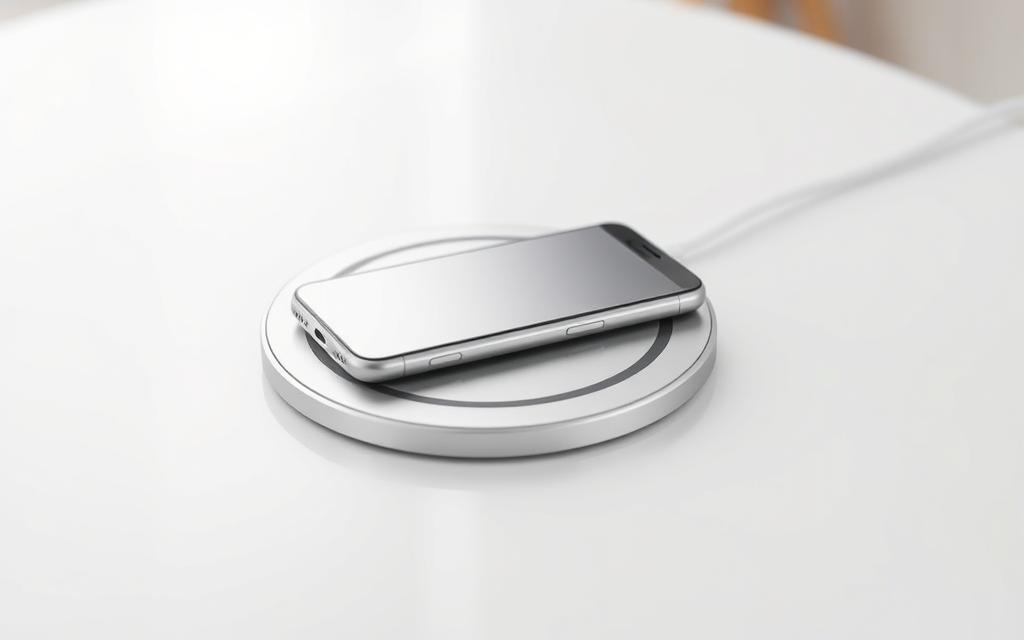
Proper Alignment Techniques
Getting your phone right on the charger is essential for good energy transfer. Most chargers have alignment markers to help you place your phone correctly. For example, ESR Halolock accessories use magnetic rings to ensure your device is aligned perfectly.
Using alignment markers
- Centre your phone’s charging coil with the pad’s central guide
- Listen for confirmation beeps or watch for LED colour changes
- Rotate horizontally if charging doesn’t initiate immediately
Third-party positioning guides
There are also other tools like adjustable phone stands or magnetic adapters to help with alignment. Multi-coil pads, as suggested by EcoFlow, make charging easier by covering a larger area. This is great for bigger devices.
Temperature Management
Heat is a big problem for wireless charging. Temperatures over 40°C can slow charging by half. Here are some tips to keep your device cool:
Removing thick cases
- Take off cases thicker than 3mm before charging
- Avoid metal-lined protective covers
- Use slim silicone cases for minimal interference
Avoiding direct sunlight exposure
Don’t charge your device in direct sunlight or on dashboard mounts. For car charging, keep the pad away from heated seats or air vents. EcoFlow’s temperature-regulated pads adjust power output to avoid overheating.
Troubleshooting Common Qi Charging Issues
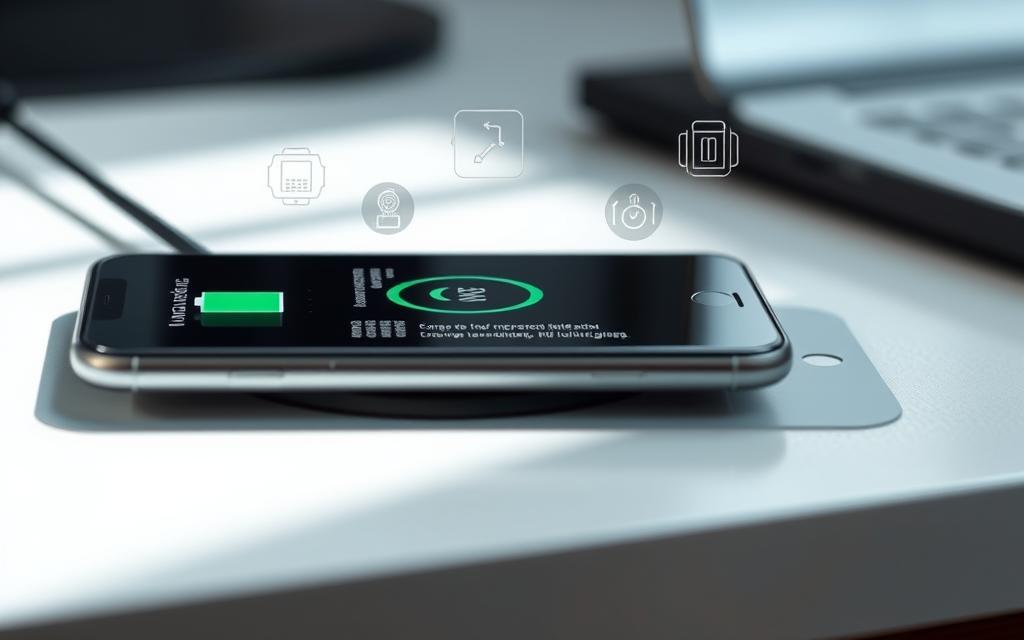
Even devices with certified Qi technology sometimes have charging problems. Knowing these common issues helps fix them easily without needing a pro.
Intermittent Charging Solutions
Charging that stops and starts often comes from physical blocks or software bugs. Here’s how to find and fix these problems:
Cleaning copper coils
Dirt between your phone and charger can cause issues. Clean both with a soft cloth, focusing on the middle. For tough dirt, use 70% isopropyl alcohol on a cotton swab.
Resetting power management IC
Modern phones use chips that sometimes go wrong. To fix this, restart your phone while it’s off the charger. Press power + volume down for 20 seconds (Android) or power + home (older iPhones).
Slow Charging Fixes
Qi charging is slower than wired charging, but slow speeds mean there’s a problem.
Verifying power adapter specs
Chargers need at least 15W adapters to work well. Make sure your wall plug is 20W USB-C PD for faster charging. These adapters are 30-50% quicker than standard 5W ones.
Updating device firmware
Manufacturers often update to make charging better. Go to Settings > System Updates while online. Samsung and Google Pixel have recently improved their charging with updates.
If problems keep happening, try your charger with another Qi device. If it doesn’t work, reach out to the maker. Many offer 2-year warranties on their wireless charging products.
Conclusion
Checking if your phone supports Qi charging makes your life easier. It means no more tangled cords and messy charging stations. Devices like the iPhone 15 Pro and Samsung Galaxy S24 Ultra show how well Qi works.
The resonant inductive coupling in Qi makes charging fast and easy. More places, like airports and hotels, are adding charging pads. This makes it simple to keep your phone charged while you’re out.
Using a Qi-certified phone with a portable station like EcoFlow’s DELTA 2 Max is a smart move. It lets you charge anywhere, anytime. Getting Qi technology now means you’re ready for the future of wireless charging.
